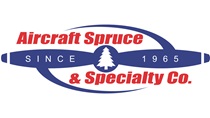Training and Safety Tip: Don't let the runway trick you
Pilots face various optical illusions depending on the type of flying they do, including illusions associated with weather, night flying, and instrument flying. However, optical illusions triggered by a runway’s width and slope affect all pilots.

I took my first flight lessons in my small hometown airport with a 2,500-foot-long and 60-foot-wide runway. Soon after, I continued training at an aviation university airport where the main runway was 10,500 feet long and 150 feet wide. While that is a huge difference—and may not be every pilot’s experience—any time you approach a runway that is narrow, wide, or sloping up or down you must overcome optical illusions for a safe landing.
When approaching a runway that is narrower than you are used to, the aircraft will appear to be higher than it is. As a result, the illusion will tempt you to fly a lower approach than is appropriate for that runway. Conversely, a runway wider than you are used to will make you feel like you are approaching low, leading you to fly a higher approach than you should.
There are obvious dangers to flying a too-low approach, but even a higher-than-normal approach is problematic and could lead to the need for a go-around.
Fortunately, there are ways to counteract these illusions. First, as with any flight, simply be prepared. Research the airport information before your flight to understand the length and width of each available runway, the slope (if applicable), and the airport environment. Armed with that information, you can anticipate which optical illusions you will likely encounter on the approach.
Second, if flying to an airport broadcasting automatic terminal information service, ensure the altimeter is set correctly and refer to it throughout the approach. Even better, use the color-coded glidepath indicator lights (visual approach slope indicator or precision approach path indicator) if you are fortunate enough to have that runway guidance available.
Lastly, as with any skill you are honing, there is no substitute for practice. Fly to airports with runways different from what you are used to—but still within your personal minimums and the limitations of the aircraft. The more you fly—safely—outside your comfort zone, the better you will be able to handle new and unusual conditions.



